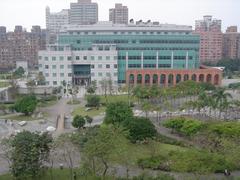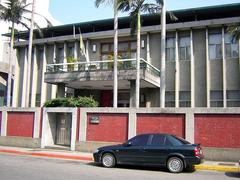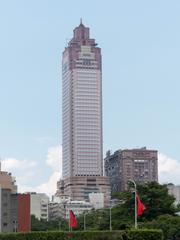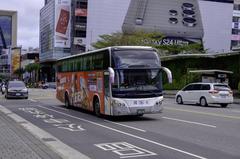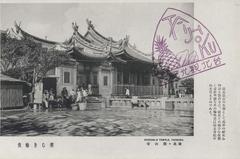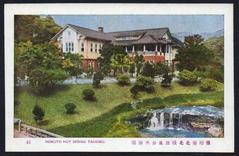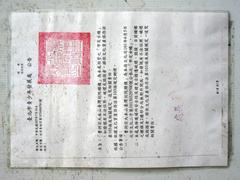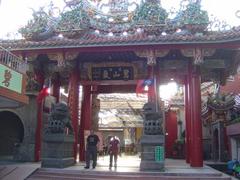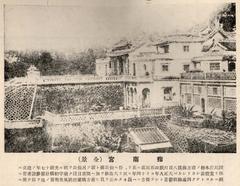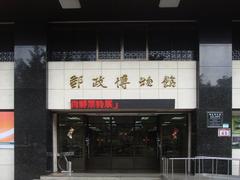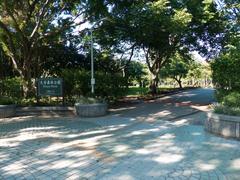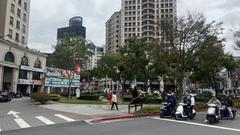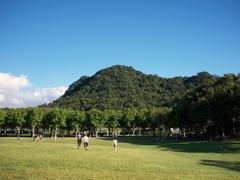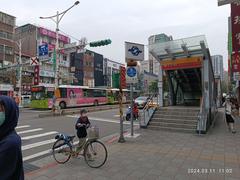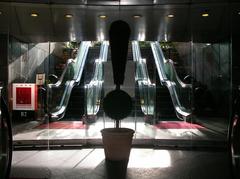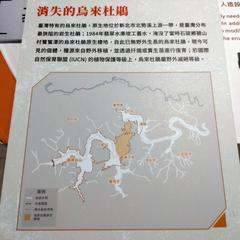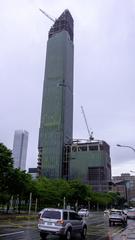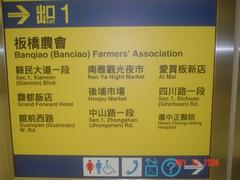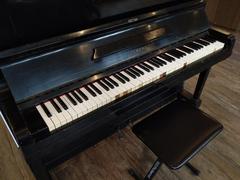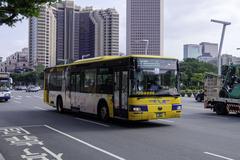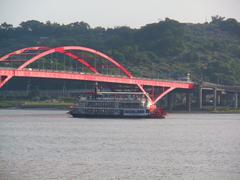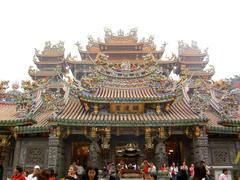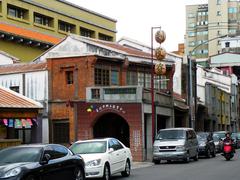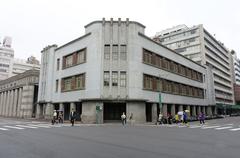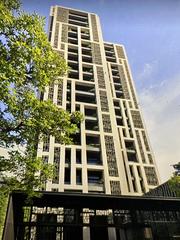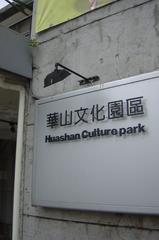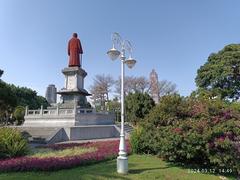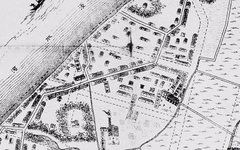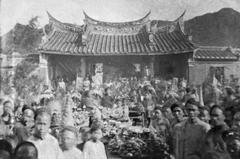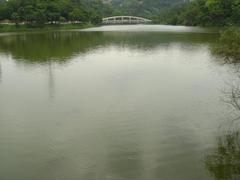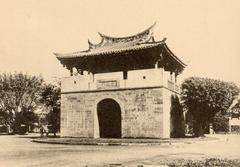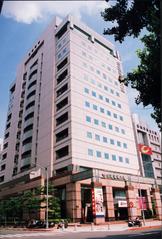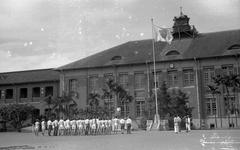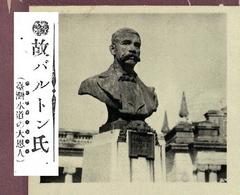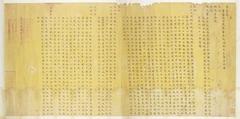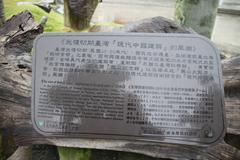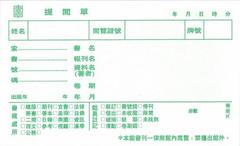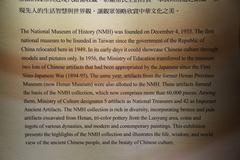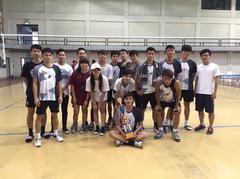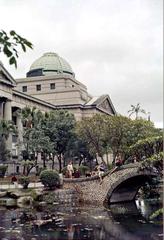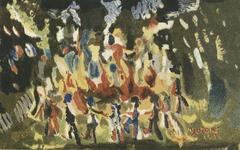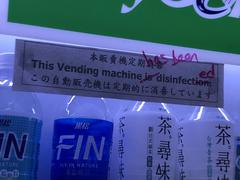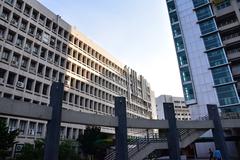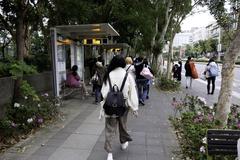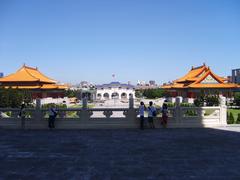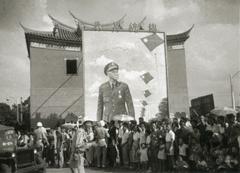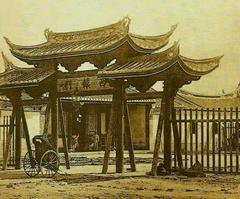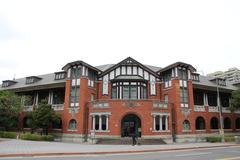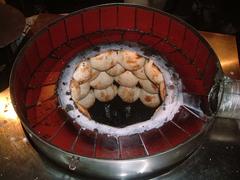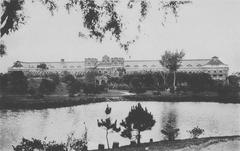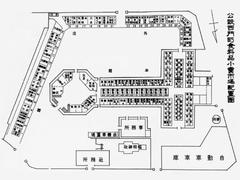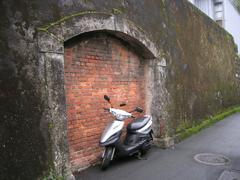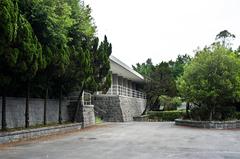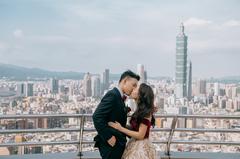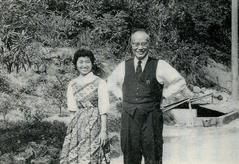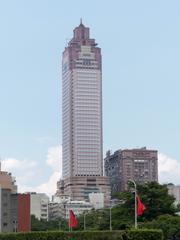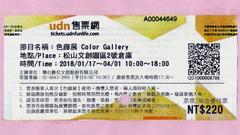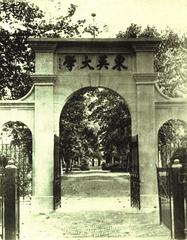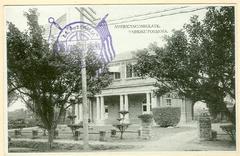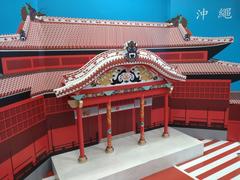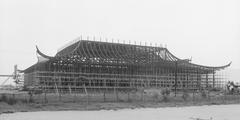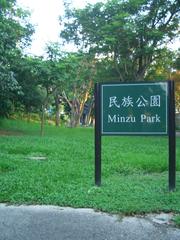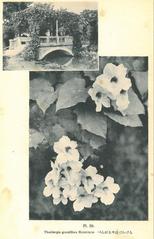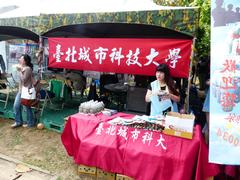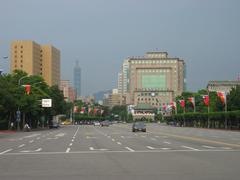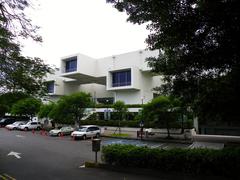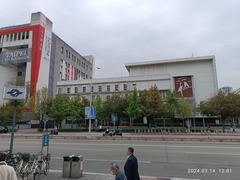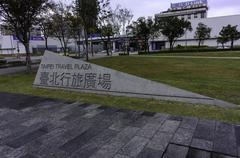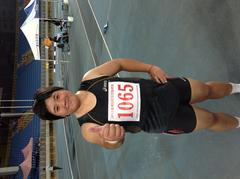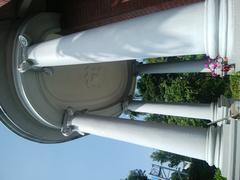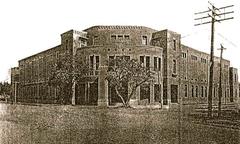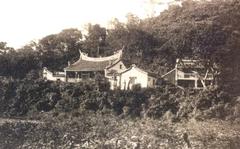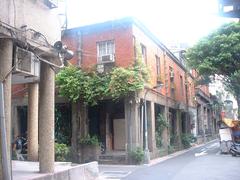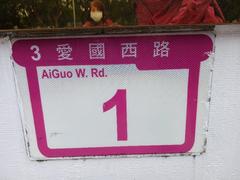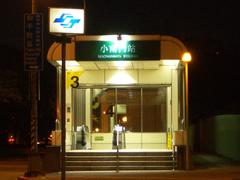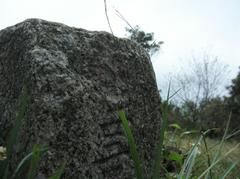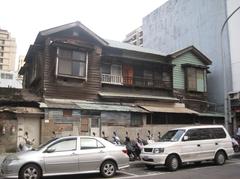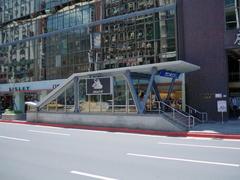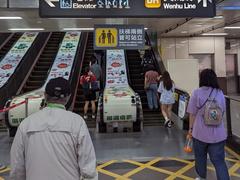Dadaocheng Gu Residence Taipei: Visiting Hours, Tickets, and Travel Guide
Date: 15/06/2025
Introduction
Nestled along the Tamsui River, Dadaocheng is one of Taipei’s most historic neighborhoods, offering a living narrative of the city’s transformation from a 19th-century riverport to a vibrant urban center. At the heart of this area stands the Dadaocheng Gu Residence—a symbol of the merchant elite’s prosperity, architectural innovation, and the intersection of Taiwanese, Western, and Japanese influences. The Gu (Koo) family’s home is both a testament to Dadaocheng’s commercial zenith and a window into the social and cultural life that shaped modern Taipei.
Although interior access to this landmark is limited due to its current use as a kindergarten, the Gu Residence’s ornate façade and preserved architectural features make it a must-see for history enthusiasts and casual visitors alike. This comprehensive guide explores the site’s historical context, architectural highlights, practical visitor information, and nearby attractions, providing everything you need to plan a rewarding visit.
For official information and updates, consult resources such as the Taipei City Government, Taipei Tourism Board, and academic works like the UCL Discovery thesis on Taiwanese merchant families.
Dadaocheng: A Historical Gem in Taipei
Dadaocheng is celebrated for its well-preserved architecture, bustling markets, and significant role in Taiwan’s tea trade. The district’s strategic riverside location facilitated its rise as a commercial hub, especially after the Tamsui port opened to international trade in 1860. This brought an influx of merchants and foreign traders, driving economic prosperity and the construction of grand merchant residences and shophouses (Taipei City Government).
The Tea Trade and Merchant Legacy
Tea export was central to Dadaocheng’s economic development. Local entrepreneurs, such as Li Chun-sheng, collaborated with British traders, establishing Taiwan as a major tea supplier to global markets (Taipei City Government). The resulting prosperity enabled families like the Koos and Lis to become pillars of both commerce and civic life.
Architectural Heritage: Where East Meets West
Dadaocheng is renowned for its architectural diversity. Shophouses and mansions along Guide Street and Dihua Street feature a blend of Southern Fujian (Minnan) traditions, Baroque Revival flourishes, and Japanese colonial elements (Taipei City Government). The Koo Family Salt Hall and other Neo-Baroque landmarks reflect the cosmopolitan aspirations of the era.
Religious and Cultural Institutions
The district is home to historic churches, such as the Li Chun-sheng Memorial Church and Dadaocheng Presbyterian Church, both blending Chinese and Western styles (Taipei City Government). Dadaocheng also nurtured artistic and cultural movements, with the Koo family supporting choirs and educational initiatives.
The Gu Family Residence: Symbol of Prosperity and Heritage
Historical Background
The Gu (Koo) family rose to prominence alongside Dadaocheng’s commercial boom. Gu Xianrong (1866–1937) expanded the family’s business from tea exports to banking, shipping, and real estate, making the Koos one of northern Taiwan’s most influential merchant clans (UCL Discovery).
Architectural Significance
The Dadaocheng Gu Residence (大稻埕辜宅) exemplifies the district’s unique architectural fusion:
- Red brick façades and intricate reliefs characteristic of late Qing merchant homes.
- Wooden lattice windows and Minnan-style courtyards.
- Western balconies and imported tiles, reflecting global influences.
- Neo-Baroque ornamentation including arched windows and balustrades (Graceful Chimes).
- Structural innovations like reinforced masonry and elevated floors for flood protection (Taipei Times).
The residence’s interior, though not open to the public, is known for its central courtyard, intricate woodwork, imported European tiles, and Japanese-style tatami rooms.
Cultural Role
The Gu Residence served as a venue for business, social gatherings, and cultural events. The family supported local education and charitable causes, helping to define Dadaocheng’s role as a hub of civic engagement.
Visiting the Gu Family Residence: Hours, Tickets, and Tips
Location and Accessibility
- Address: No. 9, Lane 303, Guisui Street, Dadaocheng, Taipei
- MRT Access: Shuanglian or Daqiaotou Station (Red Line), followed by a 10–15 minute walk (Chill and Explore)
- Nearby Bus Stops: Dihua Street, Dadaocheng Wharf
Visiting Hours
- Exterior Viewing: Available daily from the street during daylight hours.
- Interior Access: Generally closed to the public due to current use as a kindergarten.
- Special Events: Occasional heritage tours or events may allow limited access—check with the Taipei Tourism Board or local cultural offices for updates.
Tickets
- Admission: Free for exterior viewing; no tickets required.
- Guided Tours: Select walking tours include the Gu Residence as a highlight. Advanced booking may be required for special heritage events.
Accessibility
- Street Accessibility: The façade and exterior are wheelchair accessible.
- Interior Areas: Limited accessibility due to historical architecture and restricted public entry.
Visitor Etiquette
- Respect site guidelines, especially during school hours.
- Photography is permitted of the exterior; interior photography is restricted.
- Remove shoes if entering any traditional areas during special events.
Enhancing Your Visit
Visual Experience
- Photography Tips: Best light is in the morning or late afternoon.
- Interactive Maps: Available at local visitor centers and online platforms.
- Virtual Tours: Official websites often feature immersive photo galleries and digital tours.
Nearby Attractions
- Dihua Street: Explore preserved shophouses, tea shops, and artisanal boutiques (Chill and Explore).
- Temples: Dadaocheng Cisheng Temple and Xiahai City God Temple offer insight into local spiritual traditions.
- Markets and Cafés: Enjoy traditional snacks, teas, and coffee in heritage buildings.
- Festivals: The area comes alive during the Lunar New Year with markets and cultural events (navitaiwan.com).
Community Engagement and Preservation
The Gu Residence plays a central role in Dadaocheng’s heritage preservation. Ongoing collaboration between local authorities, cultural organizations, and the community ensures the site’s maintenance and educational use (UCL Discovery). The district’s pedestrian-friendly design and adaptive reuse of historic buildings foster a vibrant, accessible urban environment (english.gov.taipei).
Frequently Asked Questions (FAQ)
Q: Can I visit the interior of the Gu Residence?
A: Interior access is generally restricted, but exterior viewing is available daily.
Q: Is there an admission fee?
A: No, viewing the exterior is free.
Q: Are guided tours available?
A: Some walking tours highlight the Gu Residence; check with local operators for availability and language options.
Q: Is the site wheelchair accessible?
A: The street and exterior are accessible; some interior areas (during special events) may have limited access.
Q: What else can I see in the area?
A: Dihua Street, historic temples, markets, and heritage cafés are all nearby.
Summary and Final Tips
The Dadaocheng Gu Residence is a vital link between Taipei’s mercantile history and its contemporary cultural scene. Its architectural splendor, community significance, and location amid a vibrant urban neighborhood make it an essential stop for any visitor interested in Taipei historical sites. While interior access is limited, the site offers rich architectural details and is surrounded by other attractions that collectively tell the story of Dadaocheng’s enduring legacy.
Tips for your visit:
- Check current information on guided tours and special events.
- Wear comfortable shoes for walking and exploring nearby markets.
- Use mobile apps for self-guided tours and interactive content.
- Engage with local shopkeepers and guides for deeper insights.
For more details, consult the Taipei City Government Cultural Affairs Department and the Taipei Tourism Board for the latest updates and event announcements.
References and Further Reading
- Taipei City Government
- UCL Discovery
- Taipei Times
- Graceful Chimes
- Chill and Explore
- Taiwan Everything
- Taipei City Government
- NaviTaiwan
- Nick Kembel
